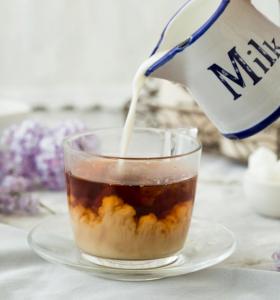JYYNA explores the tea debate: milk before or after? Uniting science and tradition, they reveal how sequence shapes flavor, aroma, and cultural significance.
Tea is more than a drink – it is a ritual, a pause in the day that connects us to history and culture”
HELSINGE, HOVEDSTADEN, DENMARK, December 22, 2024 /EINPresswire.com/ -- The longstanding question of whether milk should be added before or after tea preparation remains a topic of interest for tea enthusiasts around the world. Jyyna, a company dedicated to sustainable tea products, has explored this long-standing debate, combining historical practices with scientific research to uncover new insights.— Michael Grauslund Andersen
Recent research explores how the order of adding milk to tea influences its flavor and aroma, offering insights into this nuanced practice. Pouring milk first moderates the temperature, potentially reducing astringent notes caused by tannins and creating a smoother taste. Conversely, adding milk to hot tea introduces a temperature differential that may alter the chemical composition, subtly impacting the flavor profile (Source: mdpi.com). Despite these findings, individual preference and cultural practices continue to shape choices.
Historically, the practice of adding milk first was rooted in practicality during the 17th and 18th centuries, when fine china could crack under the heat of tea. Adding milk first acted as a safeguard, later evolving into a cultural norm, particularly among working-class households. On the other hand, adding milk after tea became associated with affluence, signifying the use of higher-quality china that could withstand heat.
“Tea offers a unique connection to culture and history, transcending its ingredients,” said Michael Grauslund Andersen, founder of Jyyna. “By revisiting debates like this, we aim to celebrate the ritual of tea and its significance in everyday life.”
In recent years, the rise of plant-based milk alternatives has added a modern dimension to tea preparation. With nearly 50% of UK adults incorporating plant-based options such as almond, oat, and soy milk into their diets, the interaction between these alternatives and tea has become an area of interest (Source: ethicalconsumer.org). Each plant-based milk option brings unique textures and flavors, broadening the sensory experience for tea drinkers.
This debate also recalls the famous "Lady Tasting Tea" experiment, a statistical study from the 20th century that explored whether individuals could distinguish between tea prepared with milk added first versus last. Although not widely replicated, this study underscores the importance of sensory perception in shaping tea preferences.
“At Jyyna, we are committed to encouraging conversations that connect our customers to the artistry and sustainability of tea,” Andersen added. “Exploring preparation methods reflects the timeless relevance of tea and its role in our daily lives.”
Tea’s history spans thousands of years, originating in ancient China and becoming a symbol of British culture. Preparation methods, whether involving milk-first or milk-last, continue to reflect personal rituals and societal contexts. Jyyna invites tea enthusiasts to explore both traditional and modern approaches, highlighting the enduring legacy of one of the world’s most cherished beverages.
Michael Grauslund Andersen
JYYNA
+45 30 56 90 97
email us here
Visit us on social media:
Facebook
X
LinkedIn
Instagram
Legal Disclaimer:
EIN Presswire provides this news content "as is" without warranty of any kind. We do not accept any responsibility or liability for the accuracy, content, images, videos, licenses, completeness, legality, or reliability of the information contained in this article. If you have any complaints or copyright issues related to this article, kindly contact the author above.




